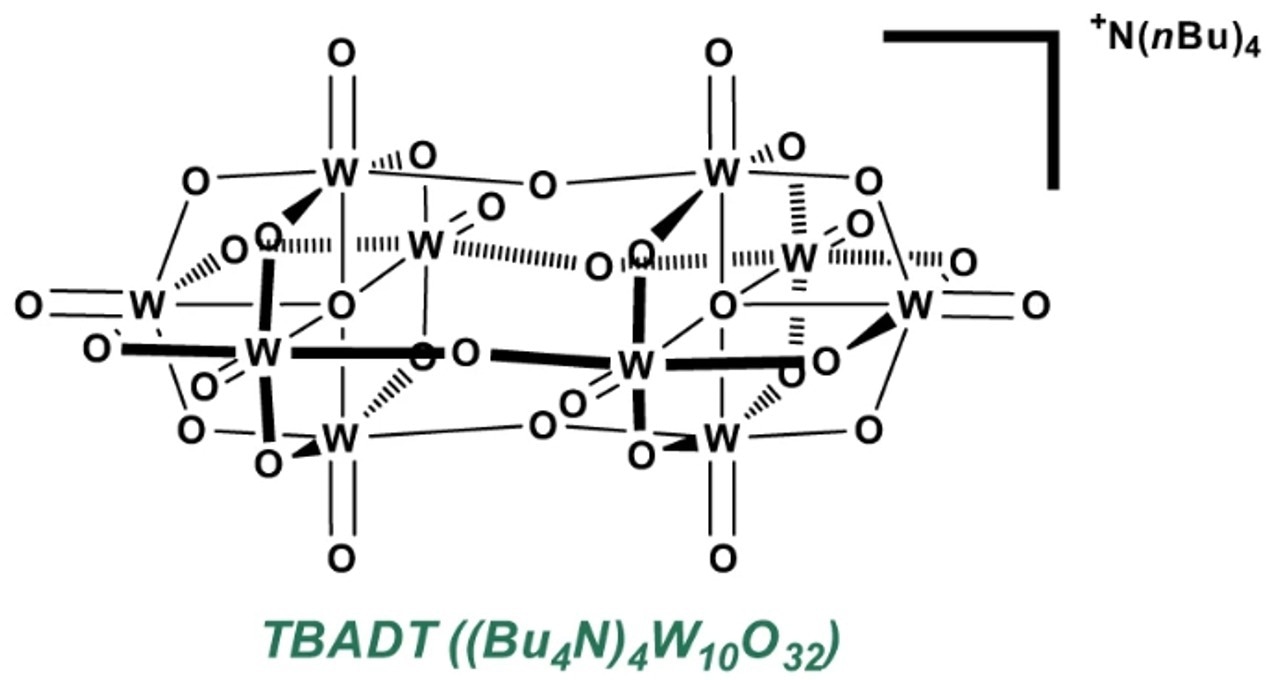For the sustainable synthesis of substances such as active medicinal components and agrochemicals, among others, photocatalysis is seen to be a potential novel strategy. Researchers from the Van ’t Hoff Institute for Molecular Sciences of the University of Amsterdam offer a method that enables the transition of photocatalysis from the laboratory to the industry in a paper published in Nature Communications.

Molecular structure of the TBADT catalyst. Its high molecular weight results in a large mass fraction of the catalyst in the reaction mixture. The high associated cost when discarded warrants the need for catalyst recycling. Image Credit: HIMS
A continuous-flow system that combines a micro-flow photoreactor with a nanofiltration device for photocatalyst recycling is demonstrated under Prof. Timothy Noël and in association with the British company Vapourtec.
Through photocatalysis, chemical transformations can be fueled directly by sunlight or LED lights powered by renewable energy. As a result, it offers a chance to make the chemical industry more environmentally sustainable and less reliant on fossil fuels.
However, the exorbitant expense of a photocatalyst frequently discourages industrial interest in photocatalysis.
The Noël Research Group creates flow chemistry systems at the Van ’t Hoff Institute for Molecular Sciences at the University of Amsterdam to accelerate the development of photocatalysis.
They now report how they have integrated the flow chemistry approach utilizing nanofiltration for in-process catalyst recycling in Nature Communications. This represents a crucial step in bringing photocatalysis to industrial uses since it effectively makes the catalyst’s cost irrelevant.
In an earlier study, the team created a flow reactor for so-called hydrogen atom transfer (HAT) processes that used a decatungstate photocatalytist (TBADT). In several HAT processes (such as photocatalytic C(sp3)–H alkylation and amination), they obtained a catalyst recycling percentage of over 99% by combining this with the nanofiltration system.
According to Prof. Noël, they observe turnover numbers (TONs) of well over 8000, which could be the largest TON yet recorded for a synthetic photocatalysis experiment. He sees the recently formed method as a vital initial step toward process-ready, sustainable photocatalysis.
Abstract of the Paper
Studies demonstrating the feasibility of the homogeneous photocatalyst tetrabutylammonium decatungstate (TBADT) for the functionalization of C(sp3)–H bonds have focused on photocatalytic hydrogen atom transfer (HAT) processes.
However, meticulous catalyst loading, cost, and removal considerations are necessary to translate this research into large-scale industrial processes.
In this study, organic solvent nanofiltration (OSN) is offered as a potential solution to decrease TBADT consumption, enhance its turnover rate, and decrease its concentration in the product solution, thereby enabling large-scale photocatalytic HAT-based conversions.
An ideal membrane’s operating conditions for TBADT recovery in acetonitrile were achieved. Two OSN stages were used to conduct continuous photocatalytic C(sp3)–H alkylation and amination reactions with in-line TBADT recovery.
The measured product yields for the in-line catalyst recycling reactions are reassuringly equivalent to those of reactions carried out with pristine TBADT, demonstrating that catalyst recovery (>99%, TON >8400) is not only possible but also does not degrade reaction efficiency.
Journal Reference:
Wen, Z., et al. (2022) Membrane-based TBADT recovery as a strategy to increase the sustainability of continuous-flow photocatalytic HAT transformations. Nature Communications. doi:10.1038/s41467-022-33821-9